Great Pyrenees are smart and serious dogs that enjoy lots of space and make excellent family pets. Learn more about living with Great Pyrenees.
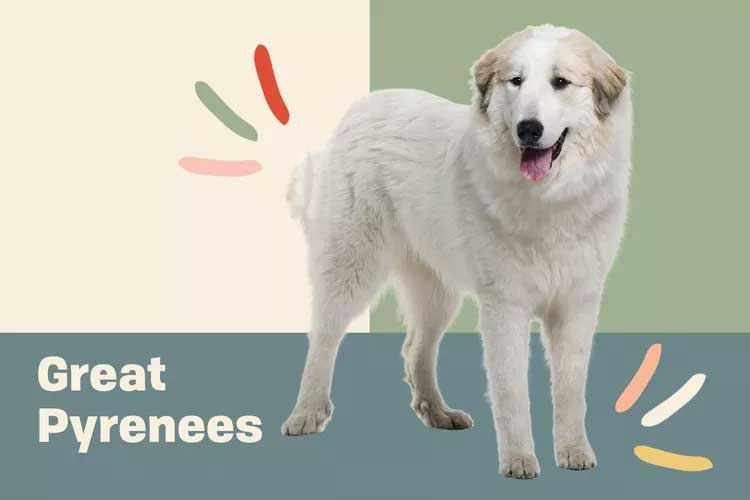
Great Pyrenees Overview
| OFFICIAL NAME | Great Pyrenees |
| COMMON NAME | Great Pyrenees |
| PET HEIGHT | 25 to 32 inches |
| PET WEIGHT | 85 to 100 pounds |
| LIFESPAN | 10 to 12 years |
| GOOD WITH | cats, children, dogs, families, seniors |
| TEMPERAMENT | aloof, gentle, protective, willful |
| INTELLIGENCE | high |
| SHEDDING AMOUNT | frequent |
| EXERCISE NEEDS | medium |
| ENERGY LEVEL | calm |
| VOCAL LEVEL | frequent |
| DROOL AMOUNT | medium |
| BREED GROUP | working |
| BREED SIZE | large (61-100 lbs.) |
| COAT LENGTH | long |
| COLORS | white |
| PATTERNS | bicolor, spotted |
| OTHER TRAITS | cold weather tolerant, highly territorial, strong loyalty tendencies, tolerates being alone |
Great Pyrenees are easily recognized by their long, flowing white coats and pensive expressions. Bred to guard sheep from large predators in the Pyrenees mountains, these large, strong, calm, and smart dogs, known to their fans as "Pyrs," have long been accustomed to working hard and making their own decisions. They're not especially common in the United States, perhaps because this breed isn't for everyone: They can sometimes seem willful and challenging to train one moment, and docile and endearing the next. For the right owner, however, the Great Pyrenees can be a loyal family dog.
Appearance
With the Great Pyrenees' size, impressive strength, and thick, fluffy white coat, it's no surprise that this breed is often compared to a polar bear. The Great Pyrenees height ranges from 25-32 inches at the shoulder. Females weigh around 85 pounds and males can be well over 100 pounds. These dogs have rich, brown eyes that are soulful and intelligent.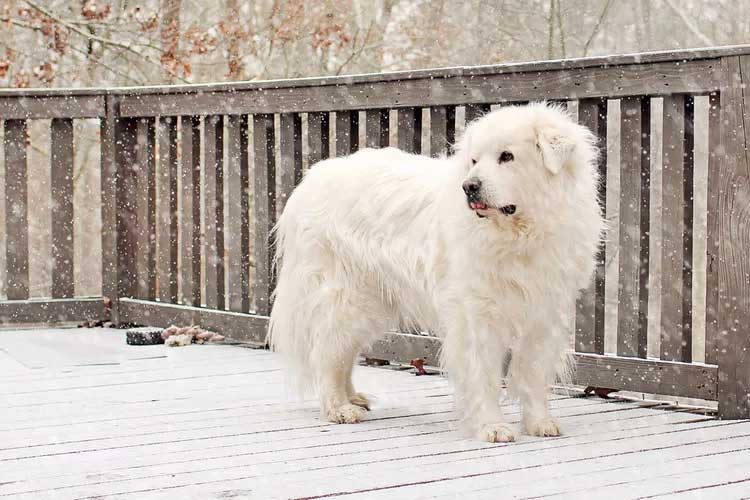
"These are really pretty dogs," says Scott Neabore, DVM, who owns Neabore Veterinary Clinic in Haddonfield, N.J. The Great Pyrenees colors are white, or mostly white, and can also bear markings in badger, gray, or tan. The double coat is surprisingly resistant to dirt and tangles. Shedding, however, is constant with Great Pyrenees, so brushing helps manage the flying fur.
Temperament
Bred to watch over sheep and livestock for long periods of time, the Great Pyrenees have a temperament that is patient, calm, and composed. "The ones I see are fairly stoic," Neabore says. "They'll kind of let you do what you want. They're not overly dramatic like some other breeds."Independence is in their nature, and that can come through as willfulness or aloofness towards strangers. Because of that tendency, and their large size, it's important to train and socialize Great Pyrenees puppies while they're young. Overall, this breed is gentle and loyal, and he can be a great family dog as well as a guardian, watching over his owners, their children, and other pets.
Living Needs
With mountain-dog roots, the Great Pyrenees can't get enough of the cold. "These are the kind of dogs that, if it's snowing out, they want to be outside and they don't want to come inside," Neabore says. "Certainly if you live in Florida, you might not consider a breed like this. It's not that you can't have it, but they're going to be more comfortable in the cooler weather."A large, fenced yard or even a farm or ranch is an ideal setting for the Great Pyrenees, who was literally born to roam. With that roaming tendency comes a desire to escape and explore, so gates and leashes are a must for this breed-off-leash adventures aren't advised. The Great Pyrenees has a tendency to bark and enjoys quiet and routine. Because they were accustomed, long ago, to standing guard over sheep at night, these dogs are nocturnal and tend to be more playful after dark and snooze the day away. Pyrs are excellent companions for other pets, gentle around cats and other much-smaller animals.
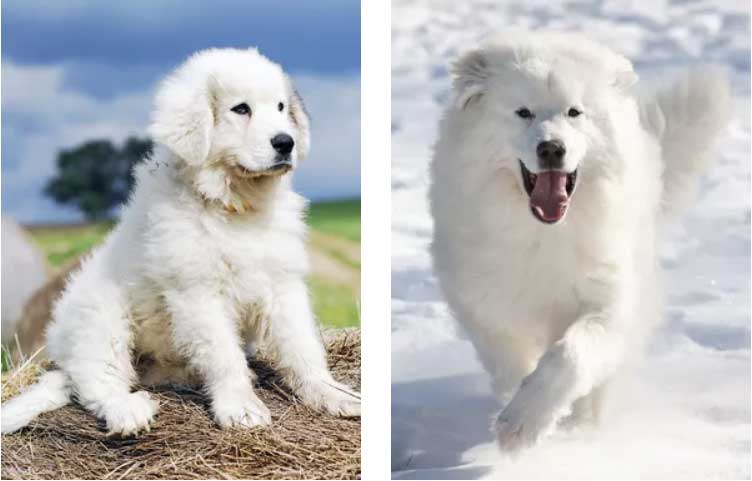
Historically, the Great Pyrenees spent a lot of time alone. Today, they can tolerate solo time, but also have a tendency to get bored-and that can lead to undesirable behaviors.
"If you are a family that doesn't have a lot of time for a dog, and you're working a lot and the dog is just staying home and staring at the wall, they're probably going to start having some behavioral issues. They might be anxious, they might have separation anxiety, those sorts of problems," Neabore says. "These are dogs that need a job. You want to do long walks, you want to play with them, you want to do some enrichment with them so they're not getting completely bored."
Care
Pyrs have a double coat to protect them against cold weather, and because of that, they shed … a lot. Shedding happens throughout the year, as well as a more thorough shed in the spring. Brushing their hair at least once a week helps. Regular nail trimming and teeth brushing should also be a part of the grooming routine.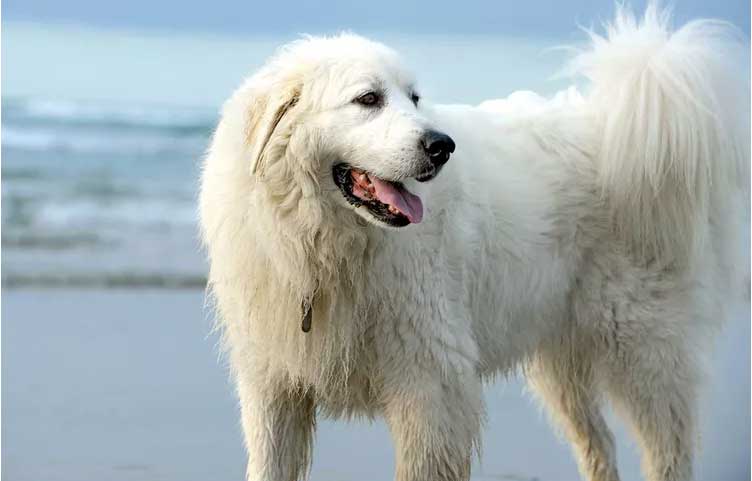
The Great Pyrenees is an active breed and a moderate exercise routine, in the form of regular walks, is healthy for these dogs both mentally and physically. They also are excellent working dogs and enjoy activities including obedience training, trials, and pulling carts.
Smart and willful, Pyrs can be strong-willed when it comes to training, according to the Great Pyrenees Club of America. They might not see the point in sitting on cue, and are sometimes described as "almost cat-like in their independence." Consistency, positive reinforcement, and patience are key when working with these dogs.
Health
The Great Pyrenees lifespan is lengthy for a large dog, at 10-12 years. And while generally healthy, Great Pyrenees are susceptible to a number of health conditions, including elbow and hip dysplasia, knee problems, eye diseases, neurological disorders, and certain cancers.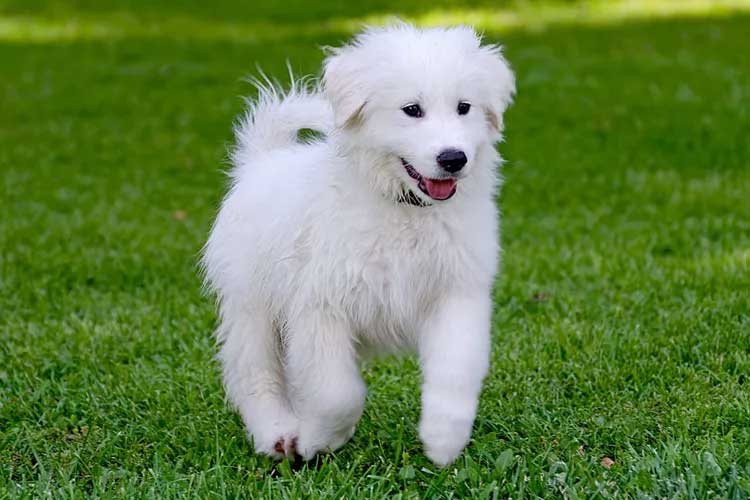
In addition, this breed can suffer from bloat, or gastric dilatation-volvulu (GDV) complex, which is a condition that happens when air accumulates in the stomach, causing it to twist. It can be life-threatening. While there are some steps owners can take that may diminish the risk of bloat, there seems to be a genetic connection to the condition, Neabore says.
When he speaks with the owners of large-breed puppies, including the Great Pyrenees, he often recommends a procedure called a gastropexy, which can be performed when the animal is being spayed or neutered, and entails suturing the stomach's outer wall to the body wall, preventing it from moving. "It's a small procedure," Neabore says. "With any of those large, deep-chested breeds, I usually recommend doing that as a protective measure against having that problem down the road."
Owners of Great Pyrenees should speak with their veterinarians about health risks and preventive options.
History
These distinctive white pups are named for the mountainous region between Spain and France, where they once guarded sheep for their owners. In the high altitudes, their thick, weather-resistant coats sheltered them from the cold.Throughout history, these dogs were widely respected for their smarts and their regal looks. According to the Great Pyrenees Club of America, the Great Pyrenees was so cherished in France, that in 1675, the breed was declared the "Royal Dog of France" by King Louis XIV's court.

Fossil evidence suggests that these dogs have been around since ancient times. Deposits from the Bronze Age that date to 1800-1000 B.C. bear a resemblance to this breed, which is thought to have originated in Asia as far back as 11,000 years ago.
Today, there is only one type of Great Pyrenees, but there are a number of Great Pyrenees mixes, such as Malanees (Great Pyrenees plus Alaskan malamute), Shepnees (Great Pyrenees plus German shepherd), Pyredoodle (Great Pyrenees plus poodle), and others.
Fun Facts
In the mid-19th century, Queen Victoria of England was a proud Great Pyrenees owner.The Great Pyrenees have something called double dewclaws, which are two toenails that stick out on the interior of the rear legs, just a bit above the feet. This is a rare feature, found only on working dogs that once needed the extra support to navigate challenging terrain-including mountains.
Great Pyrenees are known by different names in different countries. In the United Kingdom they're called the Pyrenean mountain dog. In France, they are le grande chien de montagnes (the big dog of the mountains), or le chien des Pyrenees (the dog of the Pyrenees).